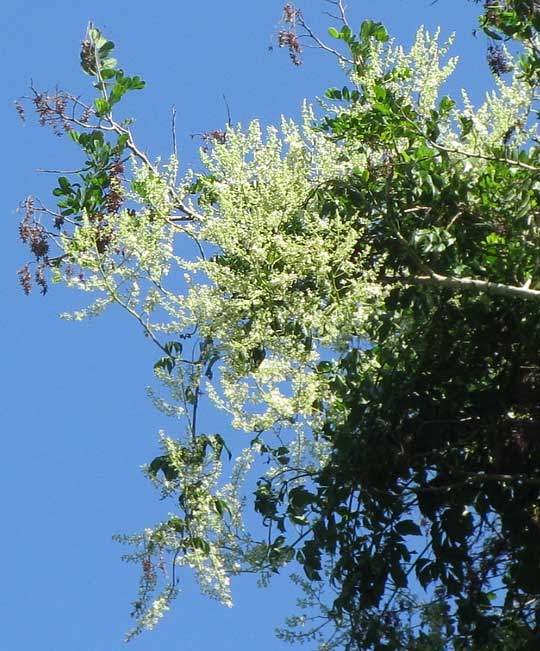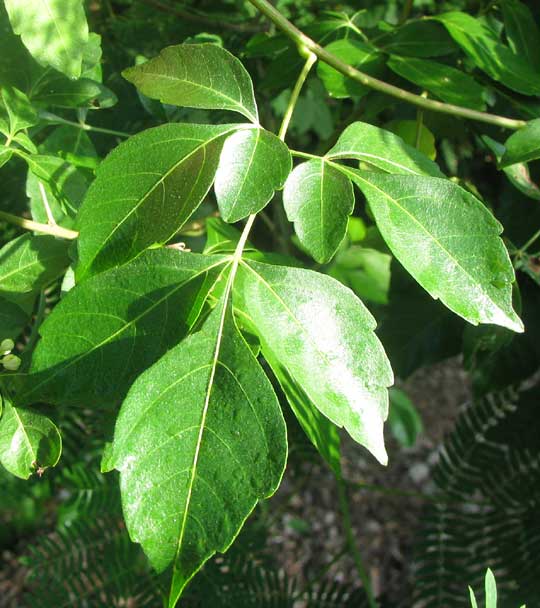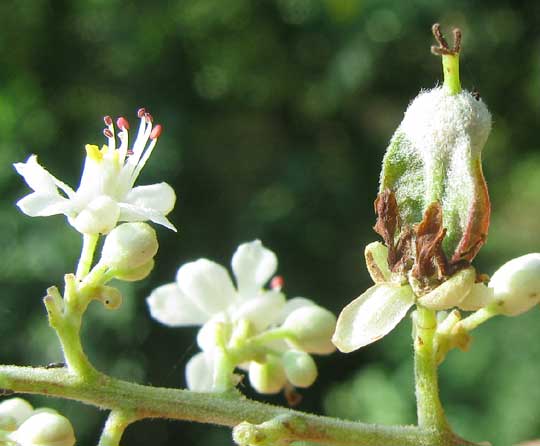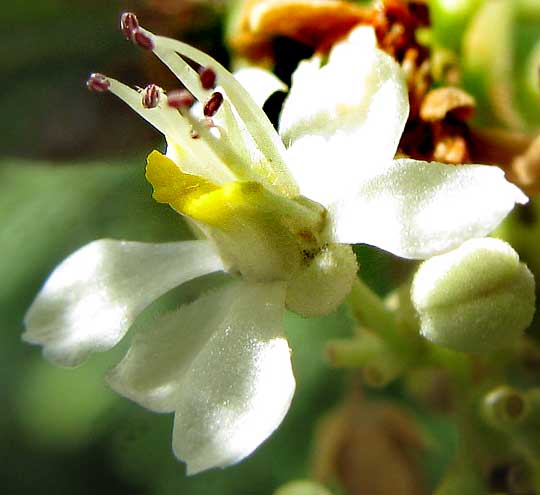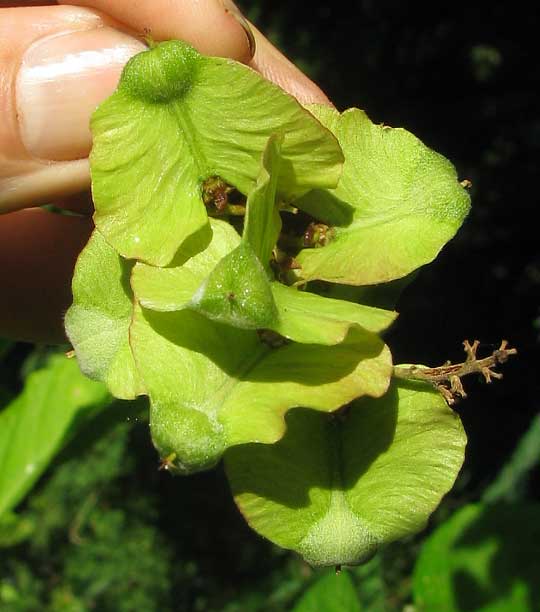Excerpts from Jim Conrad's
Naturalist Newsletter
from the December 13, 2009 Newsletter issued from Hacienda Chichen Resort beside Chichén Itzá Ruins, central Yucatán, MÉXICO; limestone bedrock, elevation ~39m (~128ft), ~N20.676°, ~W88.569° Above you see a very common sight around here these days: a robust, woody vine climbing high into trees and overtopping them with masses of small, white flowers. The Northerner can think of similarly behaving plants in the Temperate Zone, such as Virgins-Bower, but they're not nearly as vigorous and tough-looking as these. Let's approach the vine diagnostically: The leaves turn out to be large, twice-compound things usually divided into nine leaflets (biternate), shown below: The biternate leaves arranged one at a node on a woody vine remind one of the Balloon-Vine we saw back in Querétaro, and which is naturalized throughout the US Southeast. You can review what that looked like at www.backyardnature.net/q/balloon.htm. In that picture the Balloon-Vine's twice-compound leaves enter the picture at the upper left. So, is it another species of Balloon-Vine? Drawing the flowers close you see what's shown below: One interesting feature of the flower at the left is that several stamens have been replaced by staminodes -- sterile appendages derived from stamens that may serve such functions as attracting pollinating insects or giving them something to hold onto as they probe for nectar. Another interesting feature about the flower on the left is that if you dissect it you won't find female parts. It's a unisexual male flower with the only sexual parts being stamens. A close-up is below: In contrast, the flower at the right consists of nothing but the female parts of stigma, style and ovary perched atop a calyx's white sepals, and surrounded at its base by brown, withering petals. The stigma is 3-parted, the style is a green stalk, and the ovary is wooly on top, and three-cornered. Well, Balloon-Vine's Chinese-lantern-like fruits are three cornered, but the flowers are different, much larger for one thing. So, at this stage in the diagnosis process we're starting to think "Maybe the same family as the Balloon-Vine (the Soapberry Family, the Sapindaceae) but a different genus." Then you see the fruits and you KNOW it's not a Balloon-Vine. Look: What we have here is SERJANIA MEXICANA, a member of the same family as the Balloon-Vine, but with fruits not at all Chinese-lantern-like. If the vine has an English name I can't find it. When the fruits are mature each splits into three sections, each section bearing a seed with a wing, looking and behaving a bit like a maple fruit, which is a samara-fruit. Despite its abundance here there's little information on this plant. It's reported from most of lowland, humid Mexico and much of Central America. Standley says that the tough stem is often used as rope. Maximino Martiez's Las Plantas Medicinales de México reports it as useful in the treatment of "rheumatism" and syphilis, and when I asked a Maya friend he volunteered "reumatismo" without my suggesting it. I think rheumatism is the same as arthritis.
SERJANIA VINES IN FULL FLOWER
